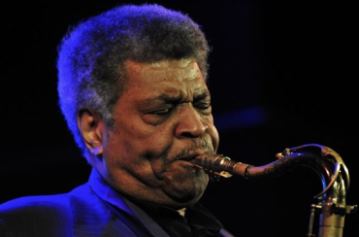George Coleman, Classic jazz Artist

No tenor saxophonist better epitomizes the robust muscularity of that heavyweight instrument of jazz expression than George Coleman. With brilliant technique and a deeply soulful tone firmly rooted in his hometown of Memphis, George has performed with many of jazz’ most legendary figures and influenced countless saxophonists during his half century in music.
Born in Memphis, Tennessee, USA
Genre: Jazz, Classic Jazz/Hard Bop/Post-bop
Growing up in Memphis’ rich musical environment of the late ‘40s and early ‘50s, alongside such notables as Booker Little, Harold Mabern, Frank Strozier, Jamil Nasser, Hank Crawford, Phineas Newborn Jr., and blues immortal B.B. King, Coleman began to teach himself to play the alto saxophone in 1950, upon being profoundly affected by the music of Charlie Parker.
So prodigious was his talent that George was soon performing locally and in 1952, at the age of 17, was invited to tour with B.B. King after the guitarist heard him in a local club. Coleman spent three more years on the vibrant Memphis scene, expanding his musical knowledge through his associations and influences, and writing for popular artists including the Moonglows and Ray Charles.
In 1955 he rejoined B.B.’s band, but this time on tenor sax, which would become his primary horn from that point on.
In 1956 George moved to Chicago, along with Booker Little. The bustling jazz scene brought him together with local heavyweights like Gene Ammons, Johnny Griffin, John Gilmore and Ira Sullivan, and he joined Walter Perkins’ group, The MJT + 3. When Max Roach heard George with this unit in 1958, he invited him to join his own quartet featuring Kenny Dorham on trumpet.
Coleman moved to New York later that year and has made his home there ever since. Booker soon replaced Dorham in the group and George remained with Max for two years. When eminent trombonist Slide Hampton formed his octet in 1959, George and his Max Roach bandmates Little and Julian Priester formed the brass-heavy front line with Slide and Freddie Hubbard.
He remained with Hampton until 1962, touring Europe for the first time during his stay. But more importantly, he began focusing more on his own composing and arranging, laying the foundation for his own octet that would be formed in 1974 and which is still a powerful force on the scene today.
Biographical information courtesy of George Coleman; for more reading see link below
http://www.georgecoleman.com/bio_frame_index.html
